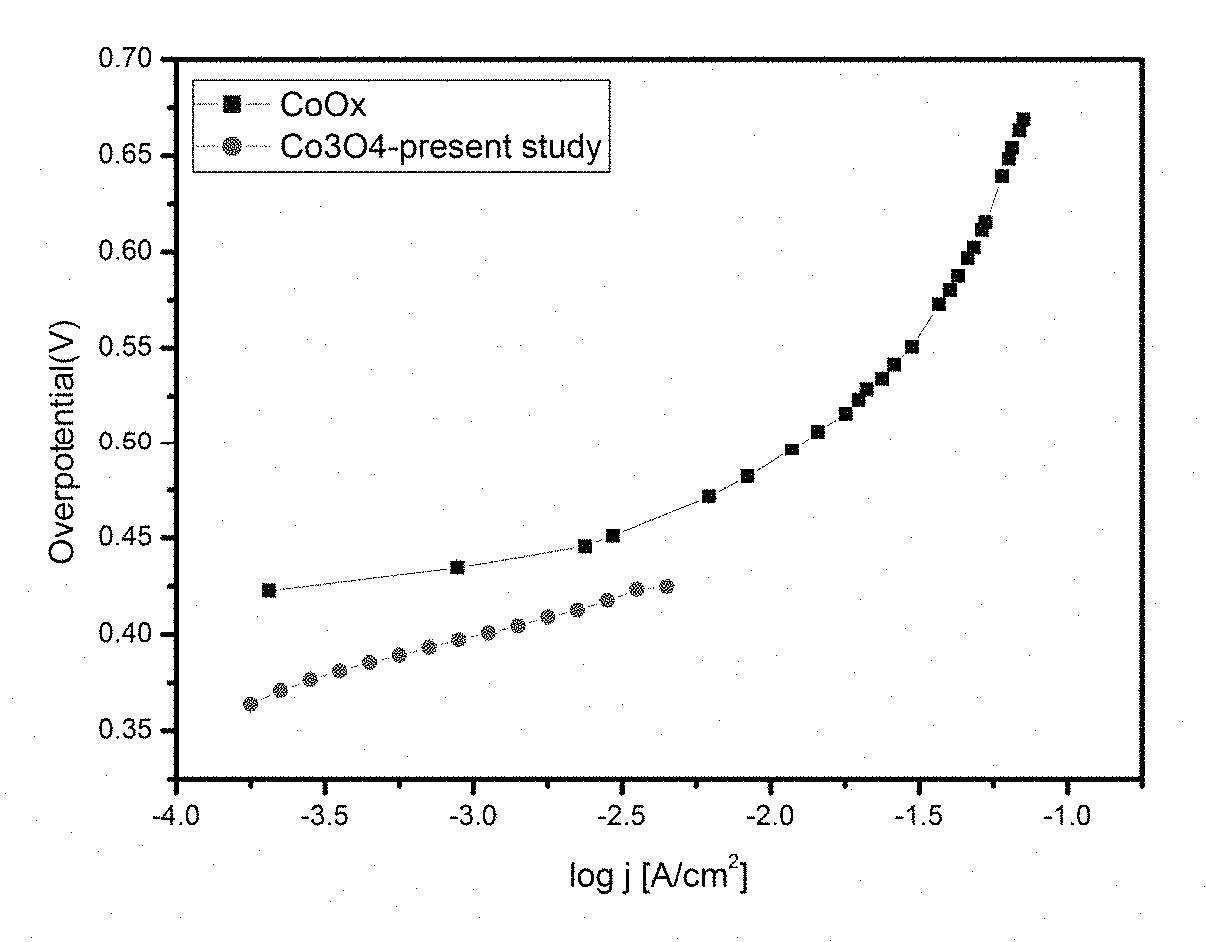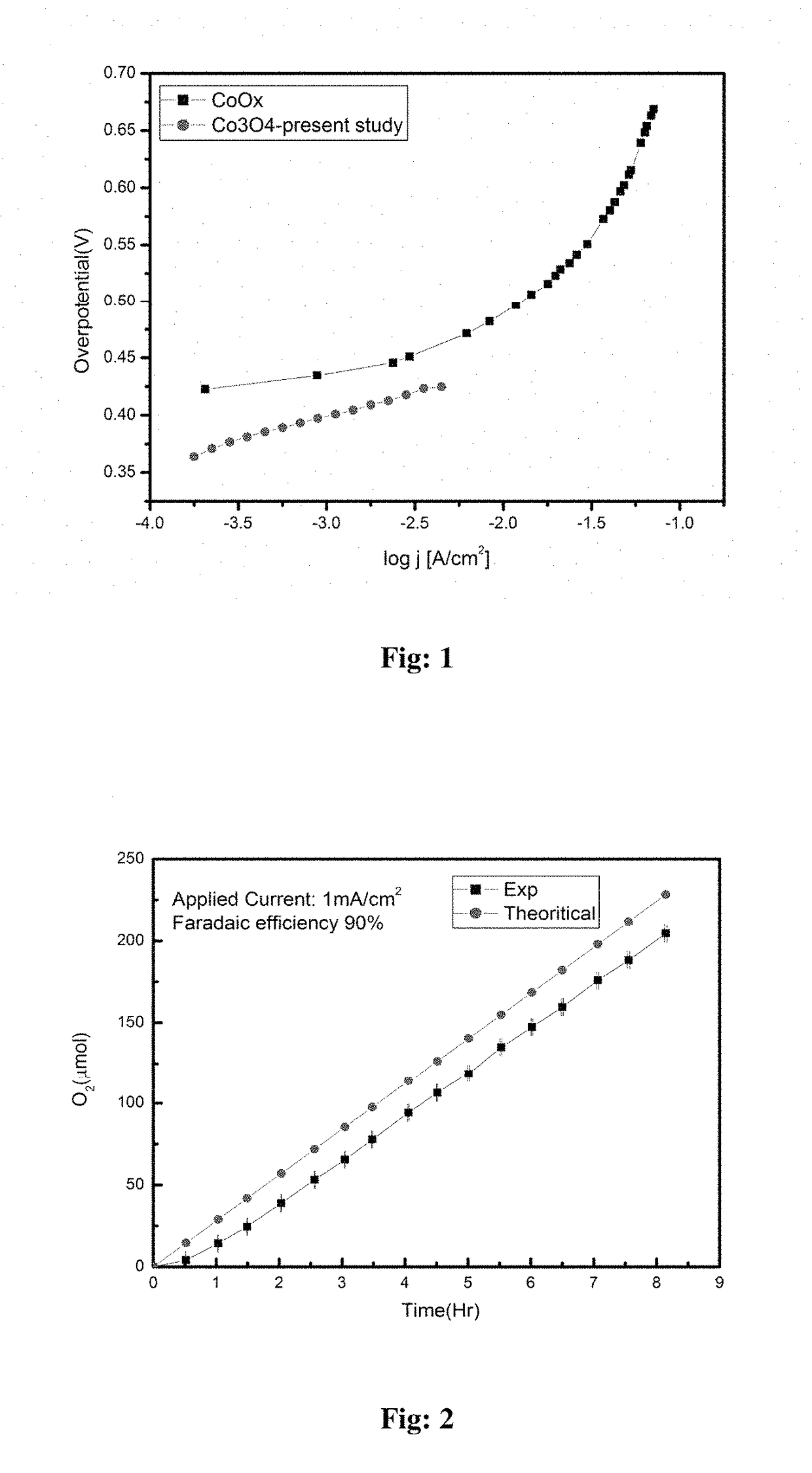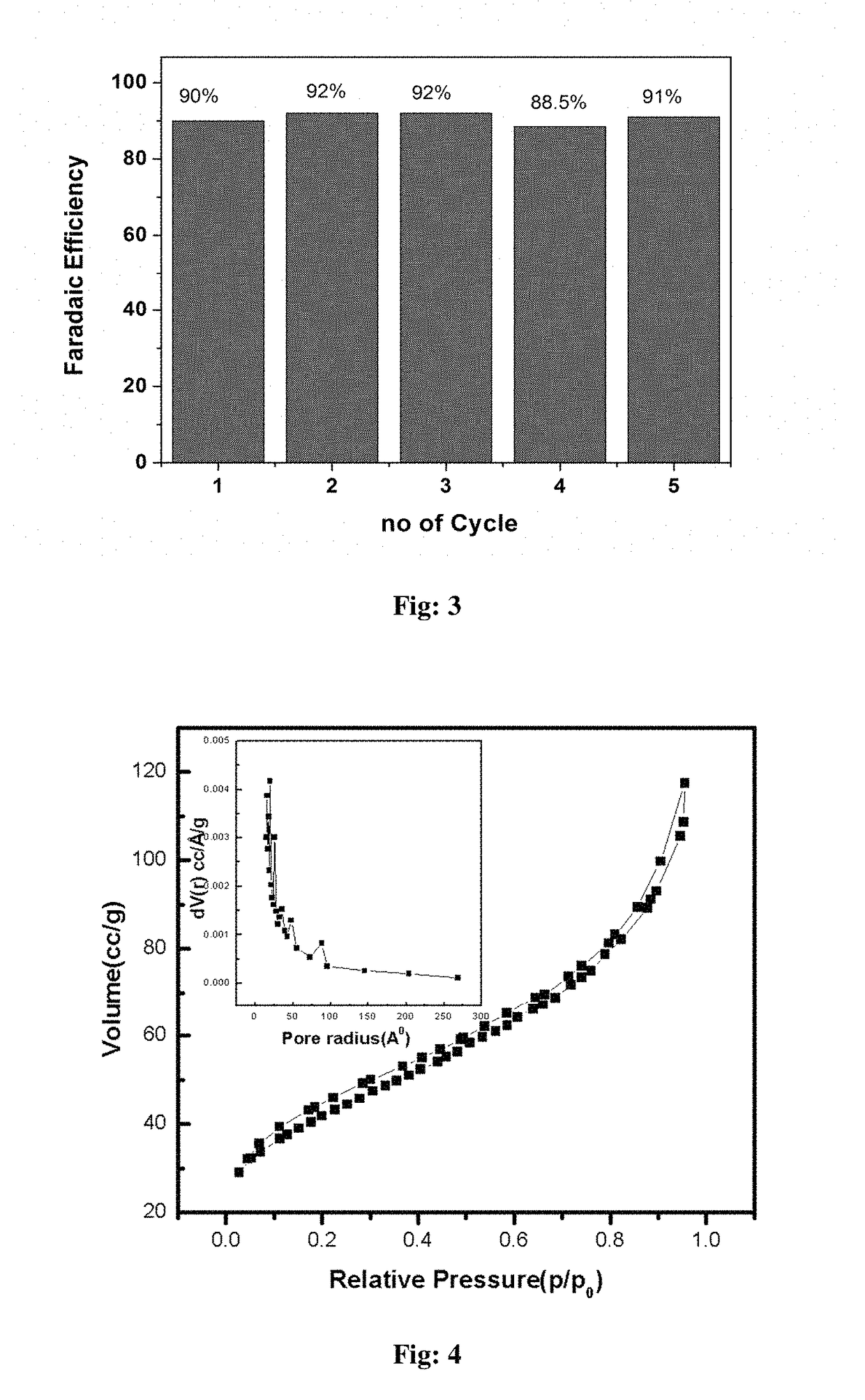Electrochemical process for water splitting using porous Co3O4 nanorods
a technology of porous co3o4 and electrochemical splitting, which is applied in the direction of electrodes, electrode shape/form, electrode components, etc., can solve the problems of high overpotential, ir and pt used in electrochemical splitting water, and difficult multi-step oxygen evolution, etc., to achieve low overpotential, high exchange current density, cost effective and efficient
- Summary
- Abstract
- Description
- Claims
- Application Information
AI Technical Summary
Benefits of technology
Problems solved by technology
Method used
Image
Examples
example 1
Preparation of Catalyst
[0062]Co3O4 nanorods were synthesized by simple co-precipitation method. 0.0339M of Co(NO3)2.6H2O and 0.0627M of K2CO3 were added simultaneously drop by drop to the water (70 ml) in the RBF (round bottom flask) at 70° C. The pH of the solution was maintained at 7.5. The precipitate obtained after completion of addition was digested within the mother liquid for 8 hours. The precipitate so obtained was washed several times to remove K+ ions and dried at 70° C. followed by calcination of the precursor at 300° C. (3 Hrs) to obtain Co3O4 nanorods. The process for the preparation of Co3O4 nanorods is already disclosed in Talanta, 2010, 81, 37-43.
example 2
Electrochemical Measurements
[0063]For all electrochemical measurements, a simple three electrode system was used. Glassy carbon was used as a working electrode. Standard calomel electrode and platinum were used as a reference and counter electrode respectively. 0.1M KH2PO4 solution was used as electrolyte for pH 4. A 0.1M mixture of KH2PO4 and K2HPO4 solution was used as electrolyte for pH 7, and 1M KOH solution was used as electrolyte for pH 14. To improve the conductivity, vulcanized carbon was added to the Co3O4 and nafion solution was added for binding purpose. The ratio of Co3O4:vulcanized carbon:nation is 7.5:2:0.5. The mixture was dispersed in isopropyl alcohol and coated on the glassy carbon electrode for electrochemical analysis.
[0064]Addition of vulcanized carbon and nafion solution (very dilute solution and not membrane) to the catalyst is the usual procedure for coating the catalyst on the electrode. It doesn't have much importance and need not be shown in the table.
[006...
PUM
| Property | Measurement | Unit |
|---|---|---|
| exchange current density | aaaaa | aaaaa |
| exchange current density | aaaaa | aaaaa |
| pore size | aaaaa | aaaaa |
Abstract
Description
Claims
Application Information
 Login to View More
Login to View More - R&D
- Intellectual Property
- Life Sciences
- Materials
- Tech Scout
- Unparalleled Data Quality
- Higher Quality Content
- 60% Fewer Hallucinations
Browse by: Latest US Patents, China's latest patents, Technical Efficacy Thesaurus, Application Domain, Technology Topic, Popular Technical Reports.
© 2025 PatSnap. All rights reserved.Legal|Privacy policy|Modern Slavery Act Transparency Statement|Sitemap|About US| Contact US: help@patsnap.com



